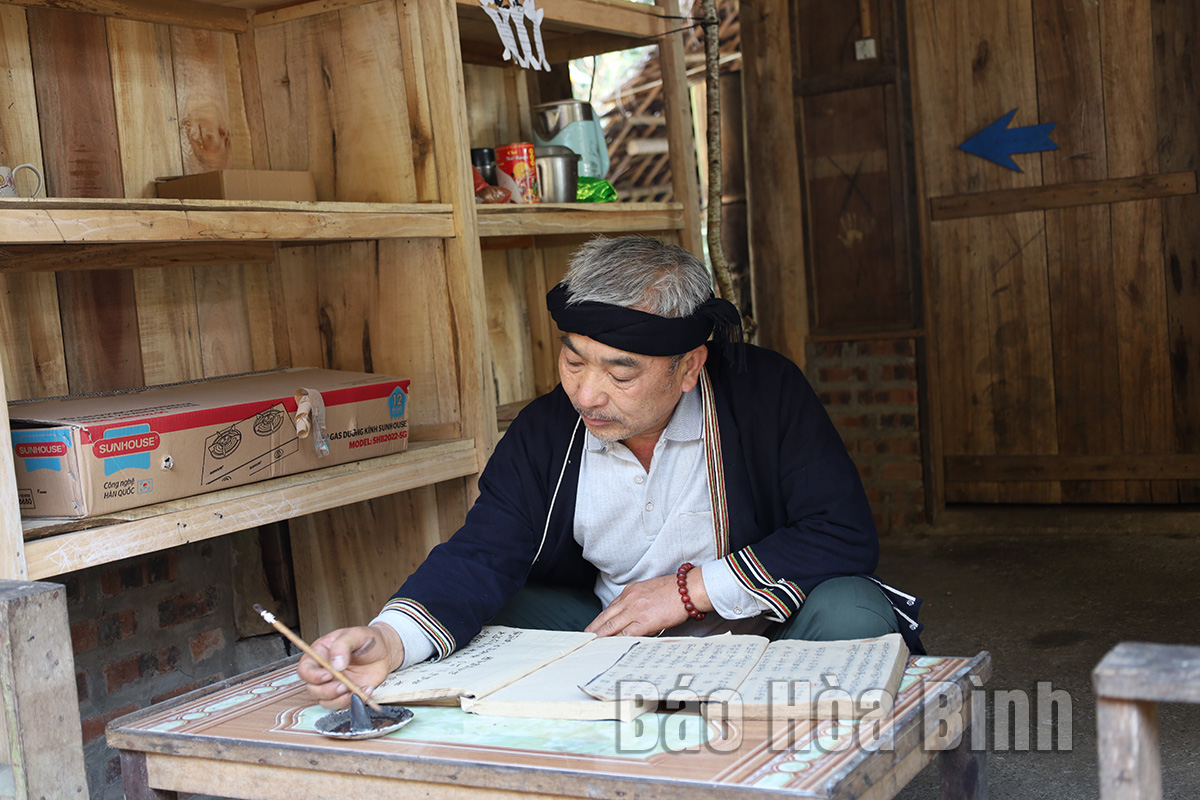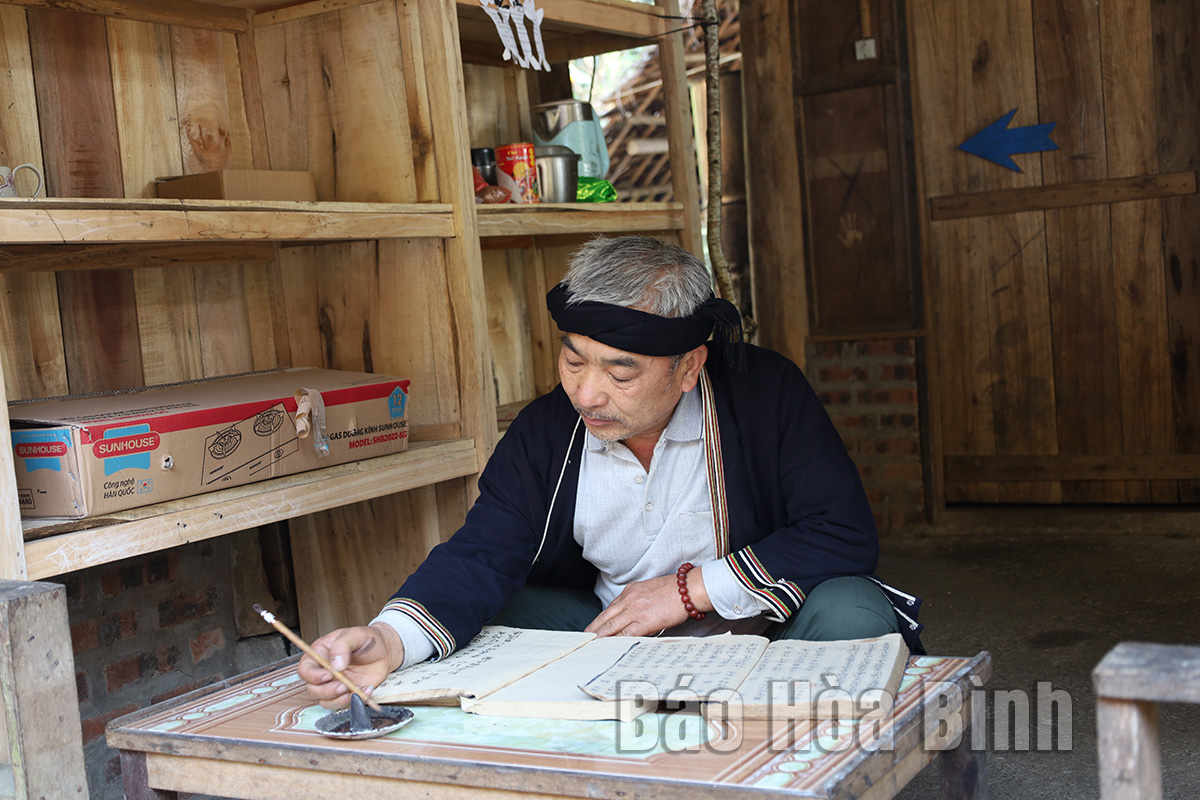(HBO) – The Dao is among the few ethnic minority groups that have and use their own scripts rather frequently. The script, called Nom Dao, is being preserved and promoted to bring into play the values of their folk knowledge thanks to efforts by local Party committees, administrations, and residents.
Ly Hong Minh, a Sung villager of Cao Son commune (Da Bac district), has been devoting himself to the preservation and popularisation of the Nom Dao script.
In his 80s, Ban Van Than in Vay Nua commune, Da Bac district, still frequents villages of Dao people to teach the script. He said the Nom Dao script is like a thread connecting the community and also contains cultural and moral values. Concerned about the risk of the traditional script falling into oblivion, Than, a former communal official, sought assistance from members of Hoa Binh province’s network for local knowledge preservation to propose the communal administration allow the dissemination of the Nom Dao script to the community.
He has maintained classes to teach the script for the last more than 10 years. As a result, hundreds of cadres and residents in Vay Nua commune have become able to basically read and write the script.
Another teacher of the Nom Dao script in Da Bac district is Ly Hong Minh in Sung village of Cao Son commune. He said that the script is an indispensable part of the Dao people’s life. It came into being also due to the ethnic group’s wish to uphold their cultural identity, including their spoken and written language.
Minh’s class has attracted a large number of local residents, including middle-aged people, the youth, and children. He teaches two - three lessons to 10 - 15 learners each month. Via learning the script, people can gain a better understanding of their ethnic group’s moral standards and customs and help pass down the heritage to future generations, he noted.
According to the Hoa Binh provincial Department of Culture, Sports and Tourism, Dao people in the province form communities in the districts of Da Bac, Luong Son, Kim Boi and Cao Phong, along with Hoa Binh city. They have a rich culture, long-standing history, and diverse folk knowledge. They use the Han (Chinese) script modified in their own way and call it "Nom Dao”.
In recent years, to protect and sustainably bring into play the script of Dao people, aside from some classes opened by local residents, all-level Party committees and administrations have also created favourable conditions for and offered encouragement to those who have in-depth knowledge of the heritage to preserve and teach it. The department has also built dossiers seeking the recognition of those dedicated to the heritage preservation as meritorious artisans or the people’s artisans. Thanks to the artisans and reputable persons in communities, the maintenance and promotion of the Nom Dao script have received even more attention.
In addition, the script has also been upheld indirectly, via the development of community-based tourism. Sung village in Cao Son commune, where community-based tourism is growing, is an example. Thanks to efforts to uphold and bring into play their values, the Nom Dao script and other heritage pieces of Dao people are generating benefits for Sung villagers./.



